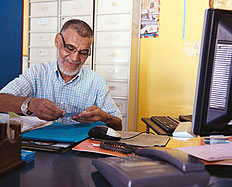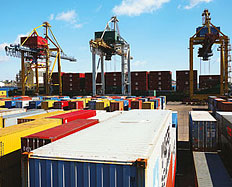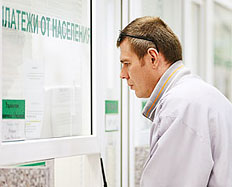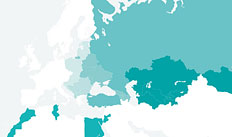COUNTRY ASSESSMENTS
Serbia
HIGHLIGHTS OF THE PAST YEAR
- Serbia has become an EU candidate country. The decision by the European Council in March 2012 is in recognition of Serbia’s cumulative reform efforts. However, no date has yet been set for beginning the accession talks.
- Reforms have advanced in several infrastructure sectors. In telecommunications, the market has now become fully liberalised and competition is increasing, while in railways, further steps have been made towards the separation of infrastructure from transport.
- Macroeconomic discipline has been weakened. The fiscal deficit increased substantially in the first half of the year above 7 per cent of gross domestic product (GDP), and the level of public and publicly guaranteed debt is now above the 45 per cent ceiling set by the Budget System Law.
KEY PRIORITIES FOR 2013
- Restoring fiscal prudence is essential for overall macroeconomic stability. Given the weak short-term growth outlook, the new government will have to implement some difficult measures in order to reduce the size of the fiscal deficit to more manageable levels.
- Regulatory independence in the energy sector should be strengthened. The removal of government interference in tariff-setting should help in improving energy efficiency and investor confidence.
- Efforts to strengthen local capital markets should be intensified. Measures to promote “dinarisation” by the central bank are bearing fruit and further progress in this area would help in the development of a more sustainable financial sector.
MACROECONOMIC PERFORMANCE
The economy contracted in the first half of 2012. In 2011 the Serbian economy grew by a meagre 1.6 per cent, one of the lowest growth levels recorded in the SEE region, and growth has significantly weakened further this year. In the first and second quarters of 2012, GDP fell by a real 2.5 and 0.8 per cent respectively year-on-year due to a combination of weak external and domestic demand. Industrial production and exports have continued to decline in the second quarter of 2012, and, more recently, a summer drought has badly affected agricultural output.
After a year of decline, inflation is on the rise again. Inflation dropped from a peak of 14.7 per cent in April 2011 to 3.2 per cent in March 2012 before beginning to climb again. In September 2012 inflation stood at 10.3 per cent year-on-year. The National Bank of Serbia (NBS) expects inflationary pressure to persist due to a combination of higher agricultural prices, a recent VAT increase (see below) and an expected increase in some regulated prices, and as a result, it anticipates that inflation will temporarily remain well above the upper limit on the target band of 4 ± 1.5 per cent. In response, NBS raised the key repo rate to 10.5 per cent in three consecutive months (June, July and August 2012), and to 10.75 per cent in October 2012. It also tightened reserve requirements. The dinar has weakened in nominal terms by about 7 per cent relative to the euro between January and August, alongside significant central bank intervention to prevent further depreciation (the NBS has sold €1.35 billion on the intrabank foreign exchange market so far this year to support the dinar).
Substantial fiscal adjustment is needed in the short term. The budget deficit, currently estimated at over 7 per cent of GDP, significantly exceeds the target of 4.25 per cent of GDP that had been agreed with the IMF under the Stand-By Arrangement. At an estimated 55 per cent of GDP, public debt exceeds the administrative limit of 45 per cent of GDP. In light of these figures and the weakening economic performance, there is a need for urgent fiscal adjustments (according to the Fiscal Council, an estimated €1 billion in savings needs to be implemented in 2012 and 2013 to avoid a debt crisis). In September 2012, the government adopted a revised budget for 2012 which aims to bring down the deficit to 6.7 per cent of GDP this year. New measures include an increase in the VAT rate (from 18 to 20 per cent) and limits on salary and pension indexation. However, spending has been raised in some areas and it is unclear if even this new target will be reached.
Further output reductions are likely in the short term. The combination of weak domestic demand and the ongoing crisis in the eurozone is having a major dampening effect on the economy. The necessary fiscal retrenchment expected in the coming year will also weigh heavily on growth prospects. However, medium-term prospects remain favourable once confidence returns to the domestic and foreign investor community.
MAJOR STRUCTURAL REFORM DEVELOPMENTS
Serbia has become an EU candidate country. Candidate status was granted by the European Council at its meeting on 1 March 2012. No date has yet been set for starting accession talks. In its latest progress report, published in October 2012, the European Commission (EC) stated that Serbia is broadly on track in fulfilling the criteria under the Stabilisation and Association process. However, in light of recent rulings by the Constitutional Court, the EC also noted that Serbia should focus more on the rule of law, in particular ensuring the independence and impartiality of the judiciary. The EC also indicated that recent developments call for increased attention on the rights of vulnerable groups as well as the independence of key institutions such as the central bank.
A major steel company has been renationalised. In January 2012 the government repurchased the local unit of US Steel, which was privatised in 2003, for a nominal price of one US dollar. US Steel decided to exit the Serbian market as a result of increasing losses and the global downturn in the steel market. The unit was subsequently shut down on 10 July because of the depressed market conditions and, as of late-September, had not yet reopened. The government issued a tender, which was subsequently cancelled, and is continuing to search for a strategic partner.
The fixed-line telecommunications market has been liberalised. The final steps to achieve full liberalisation occurred in 2012. Companies that wish to compete in the market now only need a permit, rather than an operating licence as previously required. However, implementation of a number of competitive safeguards, such as local loop unbundling or fixed number portability, is lagging behind. In addition, the fixed line market remains dominated by Telekom Srbija, which is still state-owned following a failed privatisation attempt in 2011. At the end of 2011, Telekom Srbija agreed to buy back a 20 per cent share from the Greek-owned company, OTE.
Regulatory independence remains limited in the power sector. For example, the regulatory agency still does not have the power to determine the final tariff levels (though they set tariff methodologies), which rests with the Serbian government. Proposed changes to the Energy Law to give the regulator full control over tariffs have yet to be passed by the government or the parliament. The new government has announced that it has no plans to privatise the state-owned power company, EPS. However, EPS intends to open up tenders this year for the construction of eight small hydropower plants, as well as for the rehabilitation of 15 existing plants.
Significant reform efforts are ongoing in the railways sector. A new law that allows for important institutional restructuring was adopted in August 2011. Under this law, the operating and policy-setting functions have been separated, and core railway businesses are also financially and operationally separated. The aim is to enable greater competition and improved services. Another development in 2011 was the conversion of the state-owned railways company into a joint-stock company. The new structure is intended to lead to the complete separation of infrastructure from transport, in line with EU directives. Notwithstanding these efforts, however, the pace of reforms remains slow and the sector is still a significant burden on the budget.
Non-performing loans are rising, but the institutional framework for small business finance has improved. The banking sector has coped well with the crises of the past few years and the capital adequacy ratio remains strong at 19.7 per cent as at the end of 2011. However, the level of NPLs has continued to rise and stands above 20 per cent as of mid-2012. In May 2012 the National Bank of Serbia (NBS) removed the licence of Agrobanka, which had been under administration for five months, and licenced instead a new, state-owned bank, Nova Agrobanka. Meanwhile, some of the architecture for financing SMEs has been strengthened in the past year. The credit information system has increased in effectiveness, with coverage increasing to cover 100 per cent of adults. The cadastre system has also been improved in 2011 as the registration process accelerated.
Efforts to promote local currency use have been strengthened. The National Bank of Serbia’s “dinarisation” strategy rests on three pillars: strengthening the macroeconomic environment; promoting dinar-denominated instruments and markets and developing hedging instruments for foreign currency risk in the non-bank sector. Several measures were introduced in late-2011 to advance these objectives, including a new law (applicable in December 2011) on the protection of financial services consumers, under which the first offer of a loan must be made in dinars and, if a subsequent quote is made in foreign currency, the bank must inform the customer of the risks associated with exchange rate movements. In April 2012 the NBS and the then government signed a Memorandum of Understanding (MoU) on the promotion of the dinar in financial transactions. Since 2009, Serbia has been an active participant in the Vienna Initiative, which now aims to improve coordination between home and host country authorities in order to manage cross-border deleveraging.







